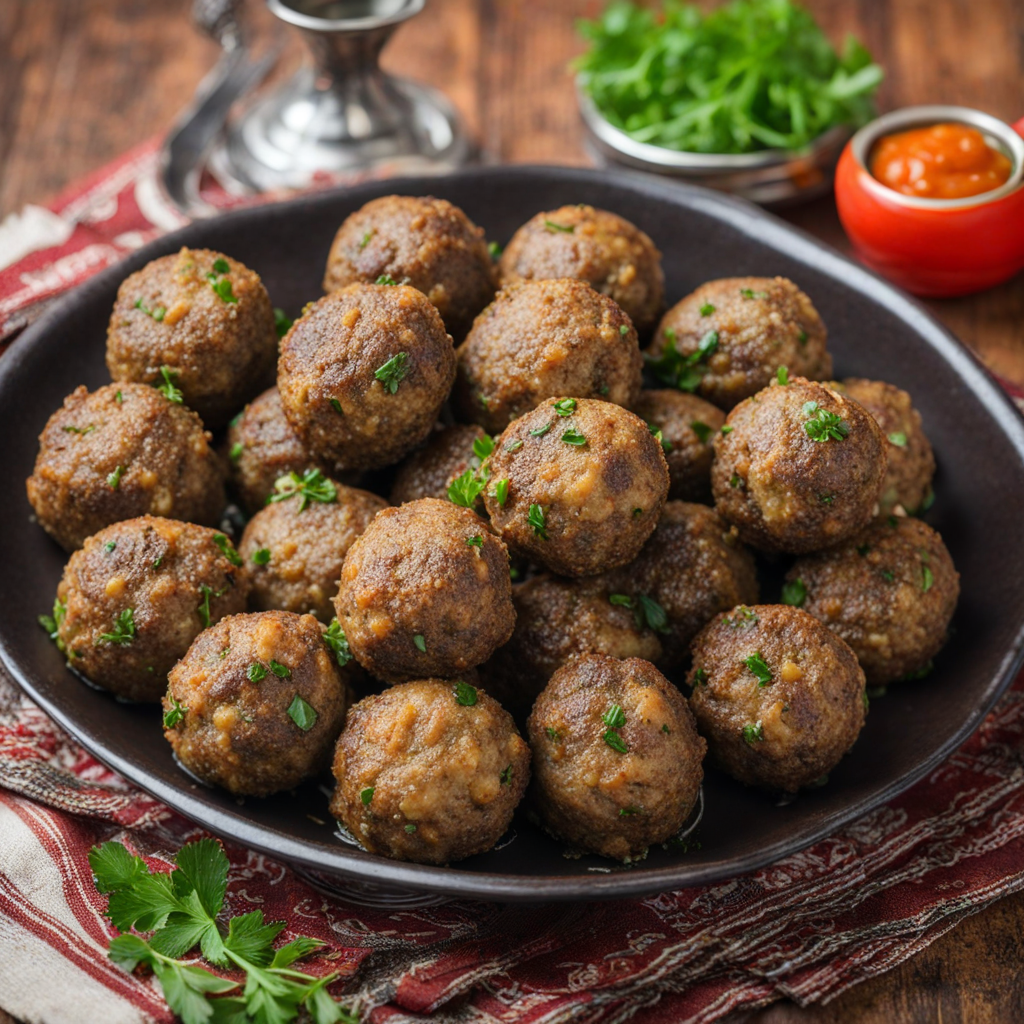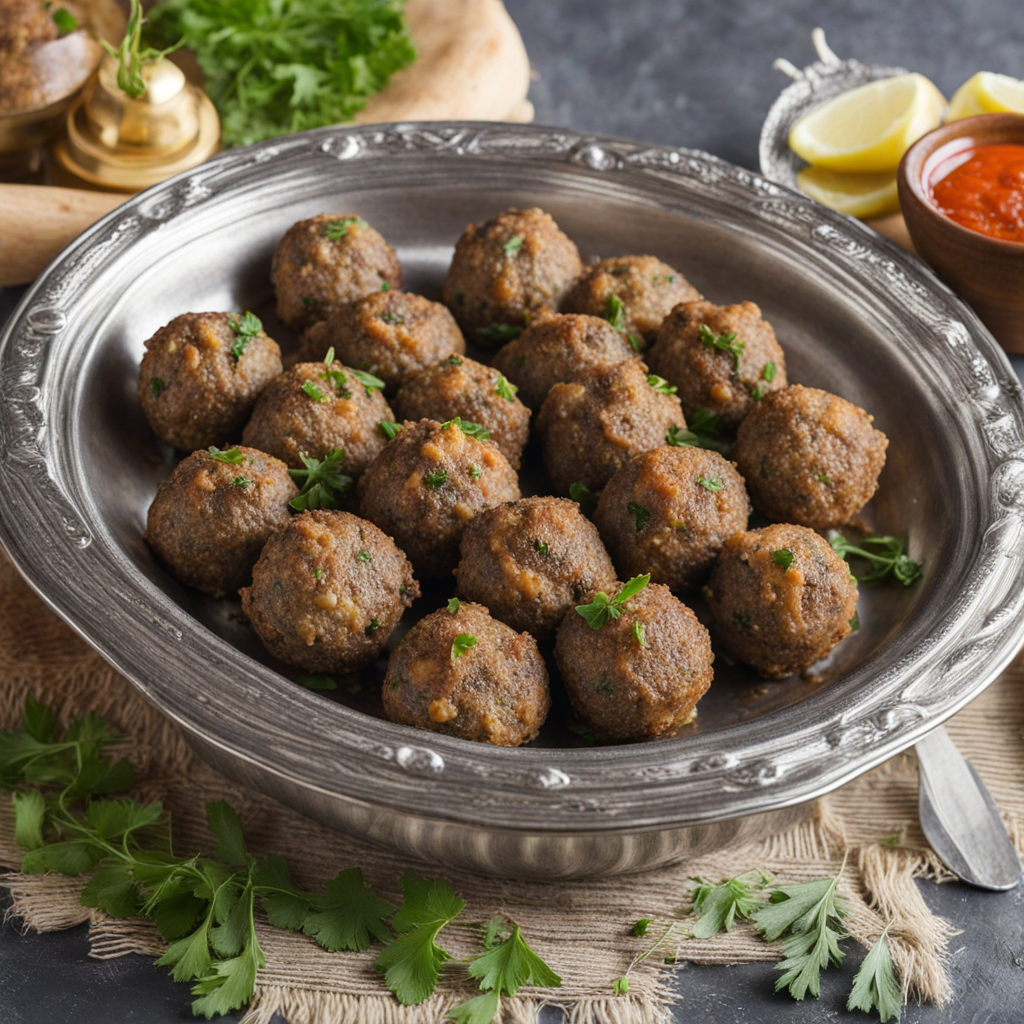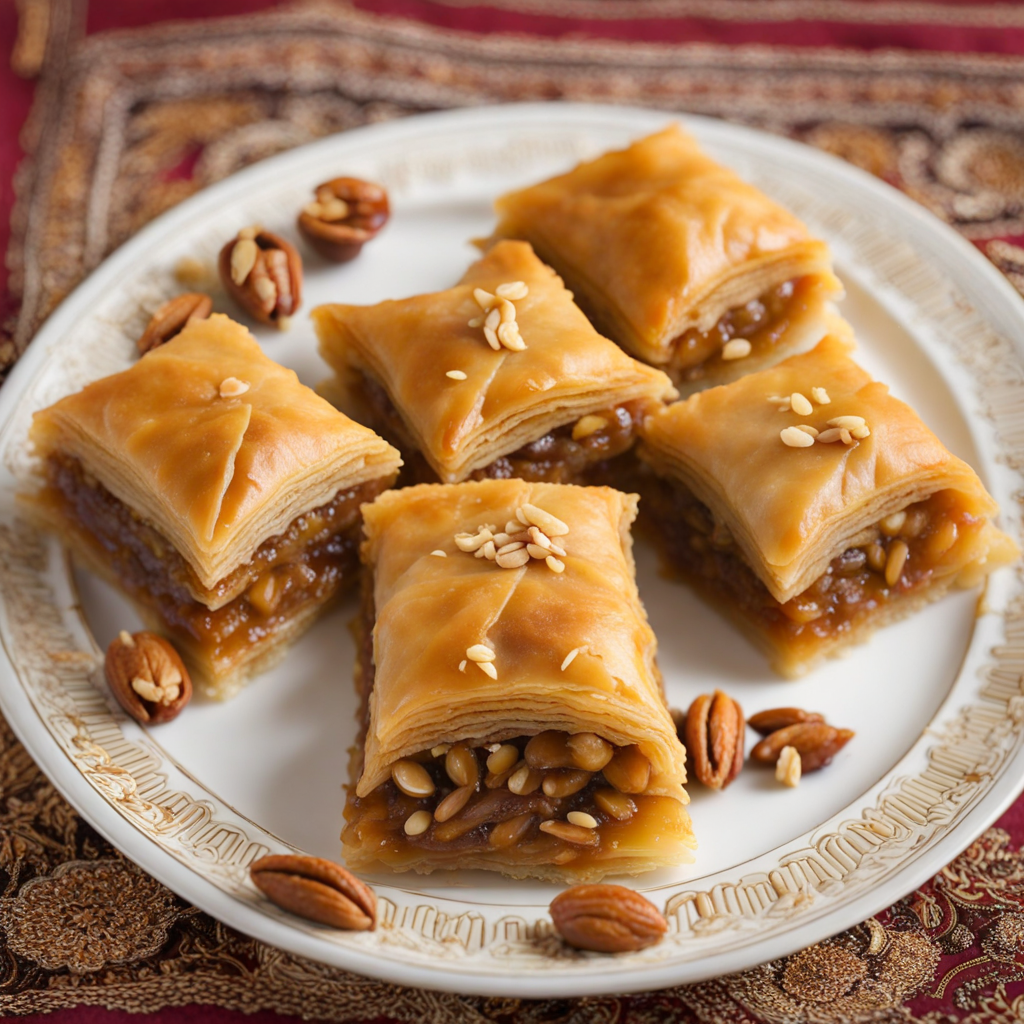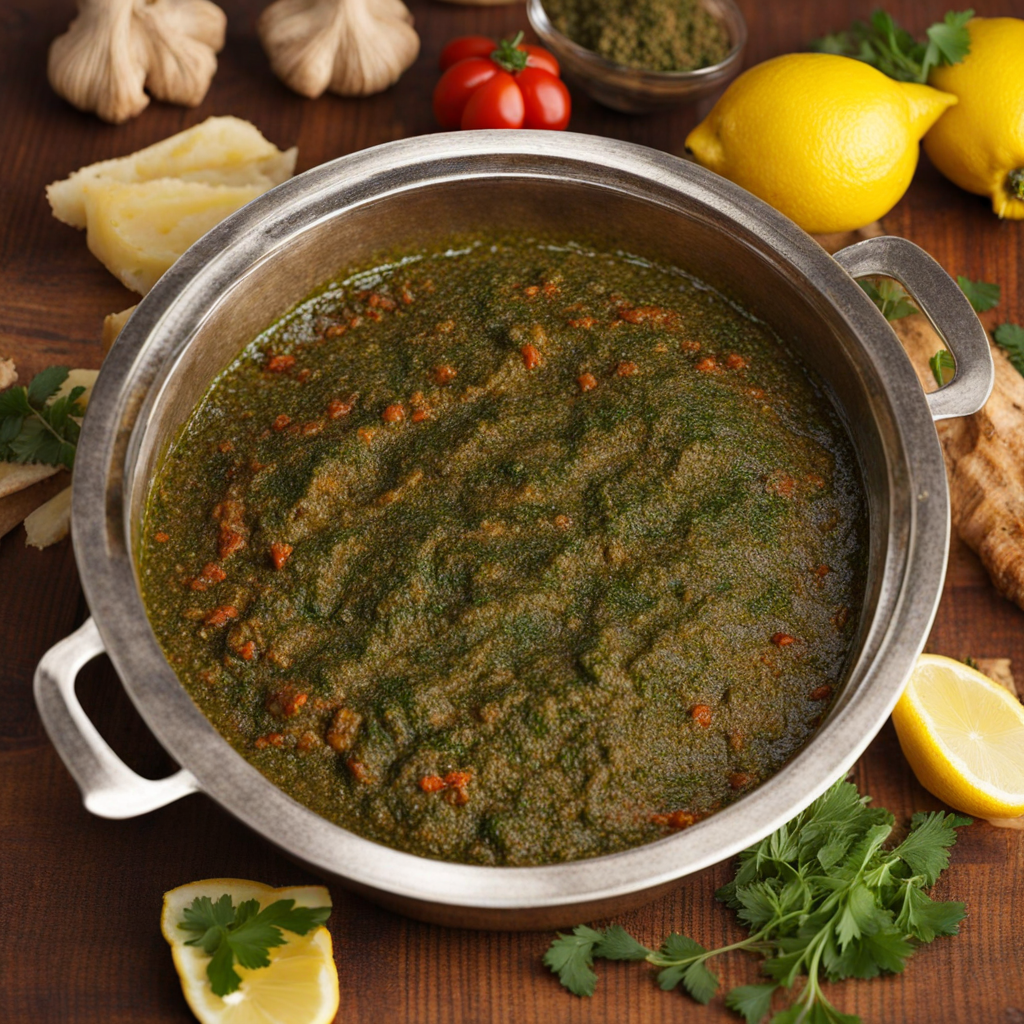Sardine Balls
Sardine Balls are a delightful Moroccan dish that showcases the country's rich culinary heritage. These savory morsels are made primarily from fresh sardines, a staple in Moroccan cuisine, known for their robust flavor and health benefits. The sardines are typically filleted and mixed with a blend of aromatic spices, fresh herbs, and ingredients like breadcrumbs or rice to create a cohesive yet textured mixture. The addition of spices such as cumin, paprika, and coriander brings warmth and depth, while fresh parsley and cilantro add brightness, resulting in a harmonious balance of flavors that perfectly encapsulate the essence of Moroccan cooking. Once formed into small balls or patties, these sardine creations are often lightly coated in flour and then fried to golden perfection. The frying process enhances their flavor, creating a crispy exterior that contrasts beautifully with the tender, flavorful interior. Served hot, Sardine Balls are often accompanied by a zesty dipping sauce, typically made from preserved lemons, harissa, or a garlic-laden tomato sauce, which complements the richness of the sardines and adds an extra layer of complexity to each bite. Enjoying Sardine Balls is not just about the taste; it’s about the experience of indulging in a dish that reflects the vibrant culture of Morocco. They can be enjoyed as a street food snack, an appetizer, or even as part of a larger meal, making them versatile in any dining setting. Whether shared among friends or savored alone, each bite transports you to the bustling markets and sun-drenched shores of Morocco, inviting you to explore the diverse and exciting world of North African cuisine.
How It Became This Dish
The Culinary Journey of كرات السردين (Sardine Balls) in Moroccan Cuisine Introduction Morocco, a nation steeped in rich history and diverse cultures, boasts a culinary tradition that reflects its geographical diversity and centuries of influences from various civilizations. Among the many dishes that encapsulate Moroccan food culture, كرات السردين, or sardine balls, stand out as a beloved delicacy that combines the bounty of the sea with the country’s vibrant culinary practices. This dish not only satisfies the palate but also tells a story of regional identity, resourcefulness, and tradition. Origins and Historical Context The origins of كرات السردين can be traced back to Morocco's long-standing relationship with the Mediterranean Sea, which has provided a wealth of seafood for centuries. Sardines, in particular, have been a significant part of the Moroccan diet, especially along the coastal regions such as Essaouira and Agadir, where fishing has been a way of life for generations. The sardine is not just a staple; it symbolizes the connection between the land and the sea, making it an integral part of Moroccan culinary heritage. Historically, sardines were abundant in Moroccan waters and became a key source of protein for both coastal and inland populations. The methods of preparing sardines evolved over time, influenced by the various cultures that passed through or settled in Morocco, including Berbers, Arabs, and Europeans. The use of spices, herbs, and local ingredients reflects this blend of influences, transforming simple fish into flavorful dishes. Cultural Significance In Moroccan culture, food is much more than sustenance; it represents community, tradition, and identity. كرات السردين is often prepared for family gatherings, celebrations, and communal meals, embodying the spirit of sharing that is central to Moroccan hospitality. The dish is typically made by mixing minced sardines with breadcrumbs, herbs, and spices, then shaping the mixture into balls and frying them until golden brown. This preparation method not only enhances the flavor of the sardines but also allows for customization, as families often add their unique twist through various spices or additional ingredients. Furthermore, كرات السردين holds a special place in the hearts of many Moroccans, particularly in urban areas where it is a popular street food. This accessibility makes it a dish that bridges social classes, enjoyed by both the affluent and the everyday person. Street vendors serving كرات السردين with fresh bread and spicy harissa sauce have become a common sight in bustling Moroccan cities, adding to the vibrant tapestry of the country’s food scene. Development Over Time As Morocco modernized in the 20th and 21st centuries, so too did its culinary practices. The preparation of كرات السردين evolved, reflecting both global influences and local innovations. Traditional recipes have remained intact, but contemporary chefs and home cooks have experimented with the dish, incorporating ingredients like quinoa or different types of fish for a healthier twist. This evolution highlights the adaptability of Moroccan cuisine, allowing it to resonate with new generations while preserving its core essence. The global popularity of Moroccan cuisine has also played a role in the evolution of كرات السردين. As Moroccan chefs and home cooks have taken their culinary traditions to international platforms, the dish has gained recognition beyond its borders. In food festivals, cookbooks, and cooking shows, كرات السردين has found its place alongside other iconic Moroccan dishes like tagine and couscous, introducing a wider audience to its flavors and cultural significance. In recent years, there has been a growing movement towards sustainable fishing and eating practices in Morocco. This development reflects a global trend towards environmental consciousness, particularly regarding seafood consumption. As awareness of overfishing and ecological impacts grows, many Moroccans are seeking to source their sardines more sustainably, ensuring that this beloved dish can be enjoyed for generations to come. Regional Variations While the basic concept of كرات السردين remains consistent, regional variations abound. In coastal cities, the dish may feature local spices unique to that area, while inland communities might adapt the recipe based on available ingredients or personal preferences. For instance, in some regions, additional ingredients such as olives or preserved lemons might be incorporated into the mixture, adding depth and complexity to the flavor profile. Moreover, different cooking methods have emerged. While frying is the most common preparation, some individuals opt to grill or bake their sardine balls, catering to healthier eating habits. Such variations showcase the creativity and adaptability of Moroccan home cooks, who continue to honor tradition while embracing modern culinary trends. Conclusion كرات السردين is more than just a dish; it is a reflection of Morocco’s rich maritime heritage, cultural diversity, and community spirit. From its origins as a humble street food to its evolution in contemporary cuisine, this dish encapsulates the very essence of Moroccan identity. As it continues to adapt to changing tastes and environmental considerations, كرات السردين remains a beloved symbol of Moroccan culture, offering a delicious connection to the past while looking toward a sustainable future. In essence, كرات السردين is a culinary treasure that invites both locals and visitors to savor not just its flavors but also the stories and traditions woven into each bite. Whether enjoyed in a bustling market or at a family gathering, sardine balls carry with them the spirit of Morocco—vibrant, diverse, and deeply rooted in history.
You may like
Discover local flavors from Morocco






